Team O’Neil rally school makes you feel like a hero—even at 30 mph
Blue-green pines whizzed past the window. As I straightened the wheel and pointed the Ford toward the next cone, my eyes snapped to the speedometer. On the previous run, I had lost control in the same place and spun at half that speed.
I braced for the same result. This time, though, the left front wheel dug through the slush and mud and grabbed. The little car pirouetted around the cone and began pawing toward the next turn. I aimed for the fourth cone. Then the fifth and sixth—set, sashay, straighten, scramble for traction. I got it right. I kept getting it right. I felt like a hero.
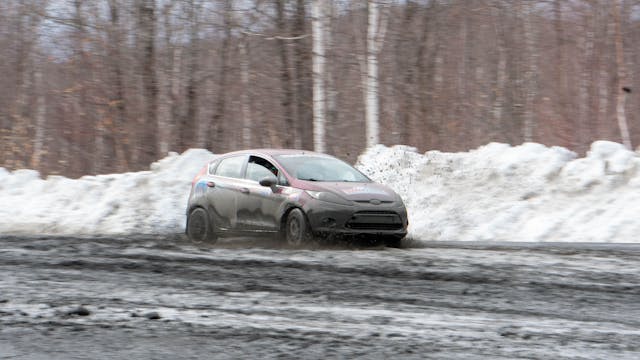
The car was doing maybe 30 mph.
The words “driving school” can conjure images of belting around a paved road course, wrestling some weapons-grade machine like a gladiator fighting a grizzly. Those schools are certainly special, and if that’s your dream, godspeed. But in New Hampshire’s White Mountains, I found something different, something I didn’t expect to love as much as I did: Over three days and a dozen or so hours of seat time at the Team O’Neil Rally School, I probably exceeded 50 mph twice. I repeatedly ran out of skill going half that fast.
But oh, when I got it right.
Rally racing means driving as fast as you can, on closed public roads, in production-based cars, as a codriver reads pre-written notes on speed and conditions. To teach that, the O’Neil school uses a 583-acre private dreamland three miles from the Vermont border. Founded by five-time American rally champion Tim O’Neil, the school offers one of the country’s premier programs for those who want the car control to go faster, and to be safer and smarter, on a loose surface. Students are provided cars and trained on two large gravel skidpads, in that slalom, and in a maze of unpaved trails and road courses in the surrounding woods.

Earlier this year, I signed up for an O’Neil hallmark, the three-day rally course. Our small group of students started in front-drive Fiestas, then progressed to all-wheel-drive Subaru Imprezas. From the word go, the instruction walked a line, blending actual stage-rally driving techniques, useful mostly in competition, with real-world car-control exercises aimed at keeping you out of a ditch when the white stuff flies.
Chris Cyr is Team O’Neil’s CEO. “The whole sport of rally,” he told me, is about taking “the conditions, and the road, and the environment that you’ve been given, and becoming a better driver.” That approach is evident in the design of the school’s exercises, and in how they’re run in any weather, but also in more subtle ways. Before we had even set foot in a car, the instructors gathered to announce a mindset: Know the limits of the car, the road, and yourself, they said, then drive to the lesser of the three.

After a short classroom orientation meant to lay out what we’d be working on over the next three days, our small group of students was thrown right in. You just start driving, running skidpad and slalom with an instructor in the right seat, trying and learning different techniques. The point is to understand how rally driving blends heroic-looking slides and adaptation but isn’t as unattainable as it might seem.
Unseasonably warm weather had melted the snow on the school’s upper skidpad the week prior, but a cold snap had caused the wet ground to freeze solid the night before we arrived. The surface started out feeling like a parking lot, but that changed in a hurry.
“Mind the changing surface as the temp climbs here,” an instructor said early on, between exercises. “Your braking points are going to change. The amount of weight transfer you’ll need to get the car to wake up and actually turn will change.” Like clockwork, just as he said, the skidpad and slalom course softened as the sun rose, going from blacktop-adjacent to ankle-deep soup. Grip that had been there on our first few passes was suddenly nowhere to be found. We kept driving anyway. As Cyr had suggested, learning to adapt was the point.
A front-drive Ford Fiesta was never the first vehicle that popped to mind when I thought “rally car.” Before going to O’Neil, that driveline layout was the last I’d have considered when imagining the ideal tool for an unpaved road. Again, though, the Fiestas were a way to learn. These Fiestas, provided to O’Neil through a long-standing partnership with Ford Performance, lacked traction control, antilock brakes, and brake boosters.
Getting the car to wake up at speed was an exercise in un-learning pavement habits. “We already know that you know how to lift, because that’s everybody’s instinct,” explained Travis Hanson, O’Neil’s chief of operations. “We want you to understand that the brakes are the most important tool in controlling a car.”

In those first few exercises, when the Ford began to push wide through a corner, I would instinctively lift off the throttle. Asking for less speed, I thought, would eventually bring the tires back into a traction window where they’d hook up and pull me around the cone. I couldn’t have been more wrong.
“Keep that throttle matted,” my instructor said, earnestly. “A locked tire has no directional ability. We use the brakes as our traction control, to manage wheelspin, but we have to keep the front tires churning through a corner if we’re going to get the sort of grip we need to redirect the car. That’s the throttle’s job.”
Keep the throttle pinned . . . on a front-drive car . . . to turn?
Rewiring my brain around the idea took the better part of a day. Nevertheless, the concept eventually began to make sense. Dozens of reps with immediate feedback just locked the process into my head.
Then the white stuff arrived. As can occasionally happen in the mountains in winter, four inches of snow blanketed O’Neil’s compound between the school’s first and second days. Rather than plow the course, we were simply pointed at the first cone in a slalom and instructed to feel it out. (“There are no weather delays in stage rally!” one staffer said, not-unserious.)
There were plenty of hairy moments, but you would never have known it from my instructor’s demeanor. Every coach had patience in spades, calmly explaining what went wrong each time I bungled an exercise. If I wasn’t understanding a concept, they’d try a different approach, allowing me to ask questions or make inferences along the way.
Their greatest talent wasn’t in being exceptional behind the wheel, though there was plenty of that to go around. Rather, as Cyr explained, being a coach at Team O’Neil means putting relationships first: “Soft skills are the most important variable. Everything else we can train, but how are you as a people person? How do you engage people, and do you enjoy educating?”

Just before lunch on that second day, we had the chance to work on the pendulum turn, known in the rally world as the Scandinavian Flick. Nailing the maneuver requires turning the car away from the corner, loading the inside tires, then timing the traction spike and subsequent weight transfer just right in order to pivot the car back around, for a straight shot through the corner.
The move is easier to show than explain. Ever flipped on a rally highlight video on YouTube and noticed how the race cars seem to float over the surface just before a sharp turn, constantly managing a bit of slip, almost backing into a corner, never quite pointed directly down the road? That’s what they taught us to do.
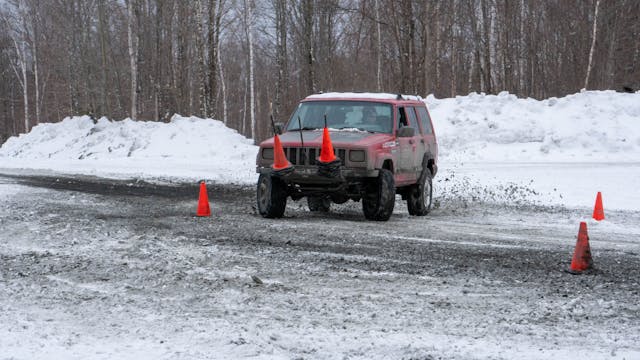
So much of getting any car to turn is about weight transfer—how each wheel is loaded at a given moment. Turns out, a pendulum means shifting that weight forward enough to unload the rear tires, to let them slide. And that becomes much easier as you add pace, which I certainly did not have enough of in my early attempts. As I tried to harness the Ford’s inertia, it just plowed on straight, refusing to turn, mowing down cones along the way.
Eventually, after some stern instructor encouragement to “GO GO GO FASTER KEEP IT FLAT NO SERIOUSLY FLAT,” I was able to carry enough speed. The Fiesta whipped into the first part of the flick quick enough that, as I lifted off brake and throttle simultaneously, the front wheels dug in and the rear tires flung the car around, aligning us perfectly with the corner’s exit.
Getting the move right had me so buzzing with adrenaline that I tried to skip lunch. (No dice. The instructors knew to keep blood sugar levels high.) But the afternoon promised new magic: It was Subaru time.
The all-wheel-drive layout now synonymous with rallying is a hallmark of the Japanese brand, and the 2000–07 Impreza used in O’Neil’s school fleet is widely regarded as a perfect starter platform for a real rally car. Before we could belt in, we were briefed on the mechanical differences between the Subarus and the Fiestas: Power-assist brakes were back, and we now had welded center differentials, four driven wheels, and a whole lot more weight to manage.
Here again, the building blocks of O’Neil’s curriculum were intentional. The Subarus cars didn’t turn as readily as the Fiestas, a byproduct not just of the additional driven wheels, but of the extra weight in play. Where throttle was useful help for changing direction in the Fiesta, adding gas while turning in the Impreza would simply pull the car forward, essentially halting your rotation. Braking to manage weight shift became even more important, but those middle inputs—turn, brake, straighten the wheel, release the brake—came in the same sequence we’d been working to learn in the Fords.
Jumping from one vehicle to the other didn’t alter the laws of physics, it simply adjusted what I needed to pay attention to when asking the Subaru to turn.

Every driving school should have a good crescendo on its final day. At Team O’Neil, that meant a full-blown rally stage, one we were told to run with as much pace as we could comfortably muster.
If it had just been a winding dirt road—draped on a mountainside, covered in fresh snow, with trees a few feet away—that would have been enough to ratchet up the pressure. (“Our trees are not, in fact, made of rubber,” explained an instructor. “Please don’t test that.”) But no, the final exercise course went through parking lots and past classroom cabins. At one point, it even featured an off-camber, decreasing-radius corner, with Team O’Neil’s main office building just to the outside.
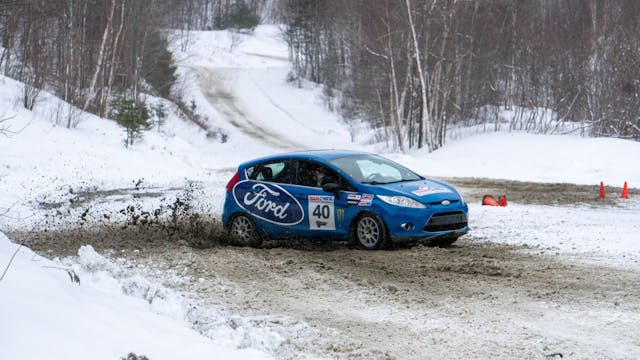
On the spotting lap, my instructor sat at the wheel and casually pointed out a badly scarred tree on the course’s downhill side. “Do your best not to mess this corner up,” he said, casually. “Was riding with a fella who overcooked this one and we ended up upside-down in that tree. Kinda put a damper on my Christmas Eve.”
(Side note: I would make a terrible rally codriver. I think too much about what could go wrong. At that moment, my stage notes would have read, Trees possible here. Not rubber.)
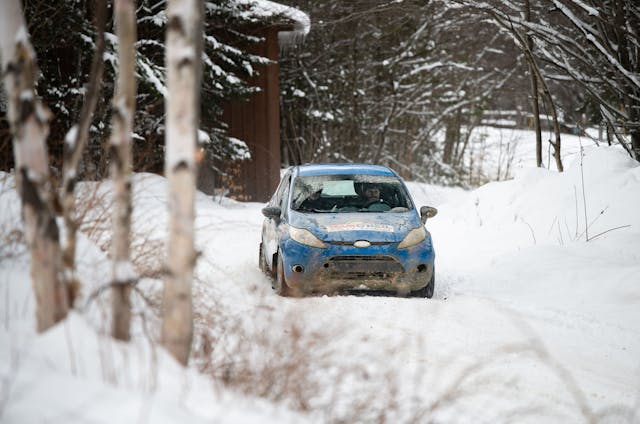
We swapped seats. I clutched out of first gear in that Fiesta, about run through a course with perhaps 34 separate opportunities for disaster. (Not that I counted or anything.) Over the sound of gravel machine-gunning the Ford’s unibody, I could clearly hear the blood rushing through my ears.
The corners arrived quickly. I had expected a panicked and ham-fisted first lap of that road, but feeling took over. After three straight days of thinking about weight transfer, I knew enough to slow down my inputs and think: Mete out braking force just so here to keep that outside front wheel loaded. Turn in early there, trusting the throttle to churn the wheels. Keep some brake in it to make sure you don’t spin the tires up and lose all traction. Patience . . . turn, then brake, then wait . . . no a little longer . . . more . . . boom, around comes the back end.

The lap culminated with a sprint up a hill to a jump. Not wanting to overstep, I lifted before the crest, the Fiesta going momentarily light but not taking off. Hands shaking with adrenaline, I slowed to a stop and looked over at the instructor.
“You didn’t wanna send that?” he said.
“We’re allowed to?”
“You came all this way to a rally school and you don’t wanna try one of the best parts of rallying?”
Noted. We hopped into a waiting Impreza. I pounded back down the hill for another lap.
As I’d previously discovered, the Subaru gathered a head of steam much quicker than the Ford. Overcooking a corner became a real risk, but again, instinct—which I didn’t have just days earlier—took over. The car came alive, sliding through each corner and chomping the space between them in a way I’ve never experienced on a paved track. I don’t know if we even saw 40 mph. Didn’t check, didn’t care.
This time, as I pointed the nose up the hill marking the course’s end, I didn’t back out. The Impreza sailed over the crest, departing earth and lifting me in the seat, up against the belts. It landed with a soft thud and we coasted to a stop.
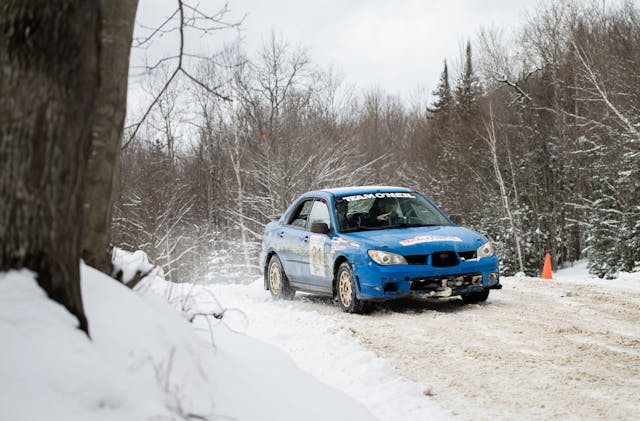
For a driving enthusiast, the feeling you get climbing out of a car after making it “work” can’t be beat. Shifting weight on the road, changing traction on command, running an engine up and down a tachometer, inviting the car to dance—that stuff can make you feel like a hero.
I’ve been fortunate enough to have a lot of incredible moments at the wheel. It might sound crazy, but none were as exciting as nailing a dirt cone slalom in second gear in a 120-hp hatchback in the New Hampshire woods. A spot in Team O’Neil’s three-day rally course will run you $4800. The school’s flagship offering, a five-day version of the same class, is $7500. I’m not naive: Those aren’t small sums. But the payoffs—a few hero moments of your own plus the skills to reduce your chances of kissing a ditch in winter—are more than worth it.
***
Check out the Hagerty Media homepage so you don’t miss a single story, or better yet, bookmark it. To get our best stories delivered right to your inbox, subscribe to our newsletters.

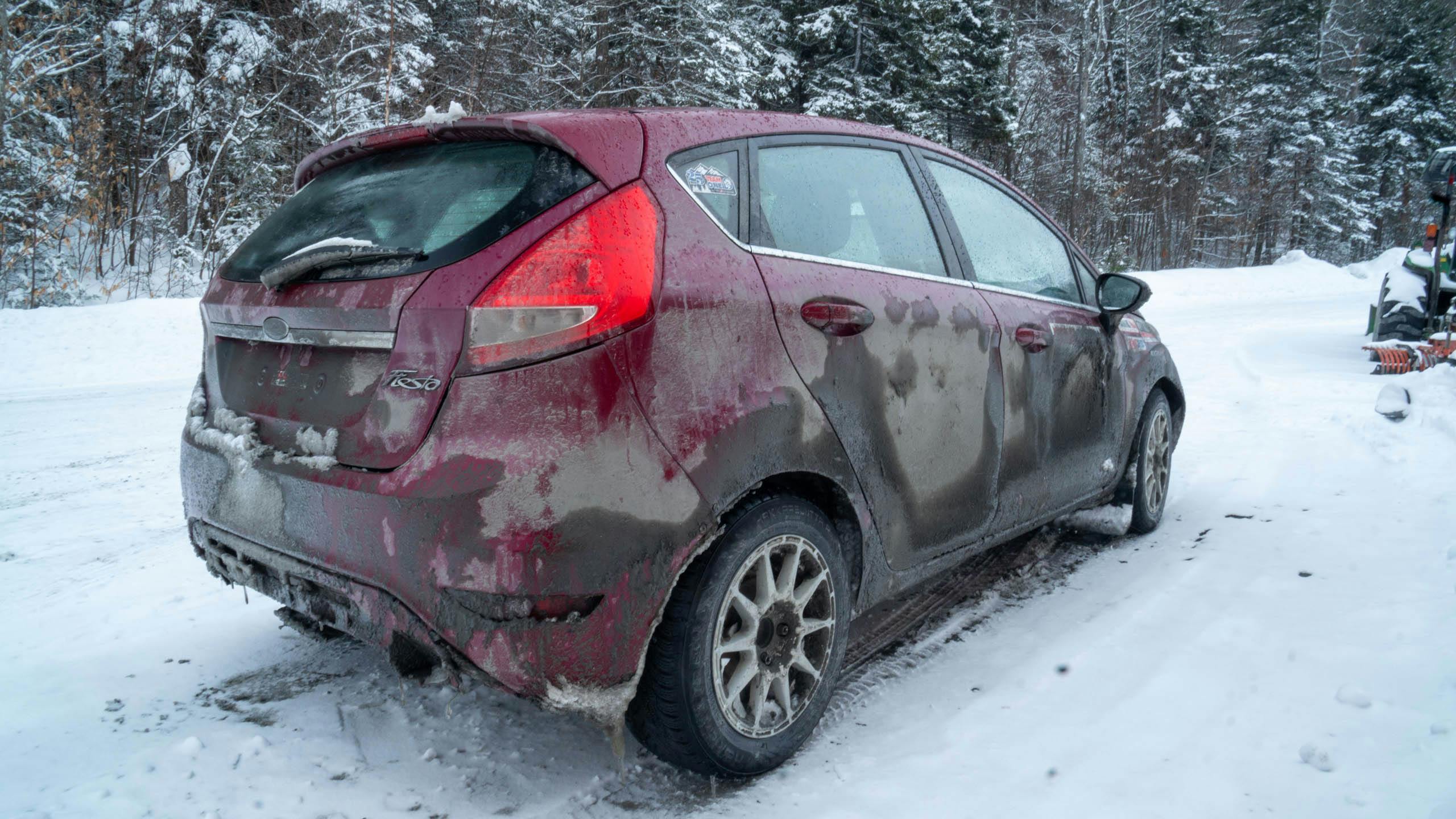
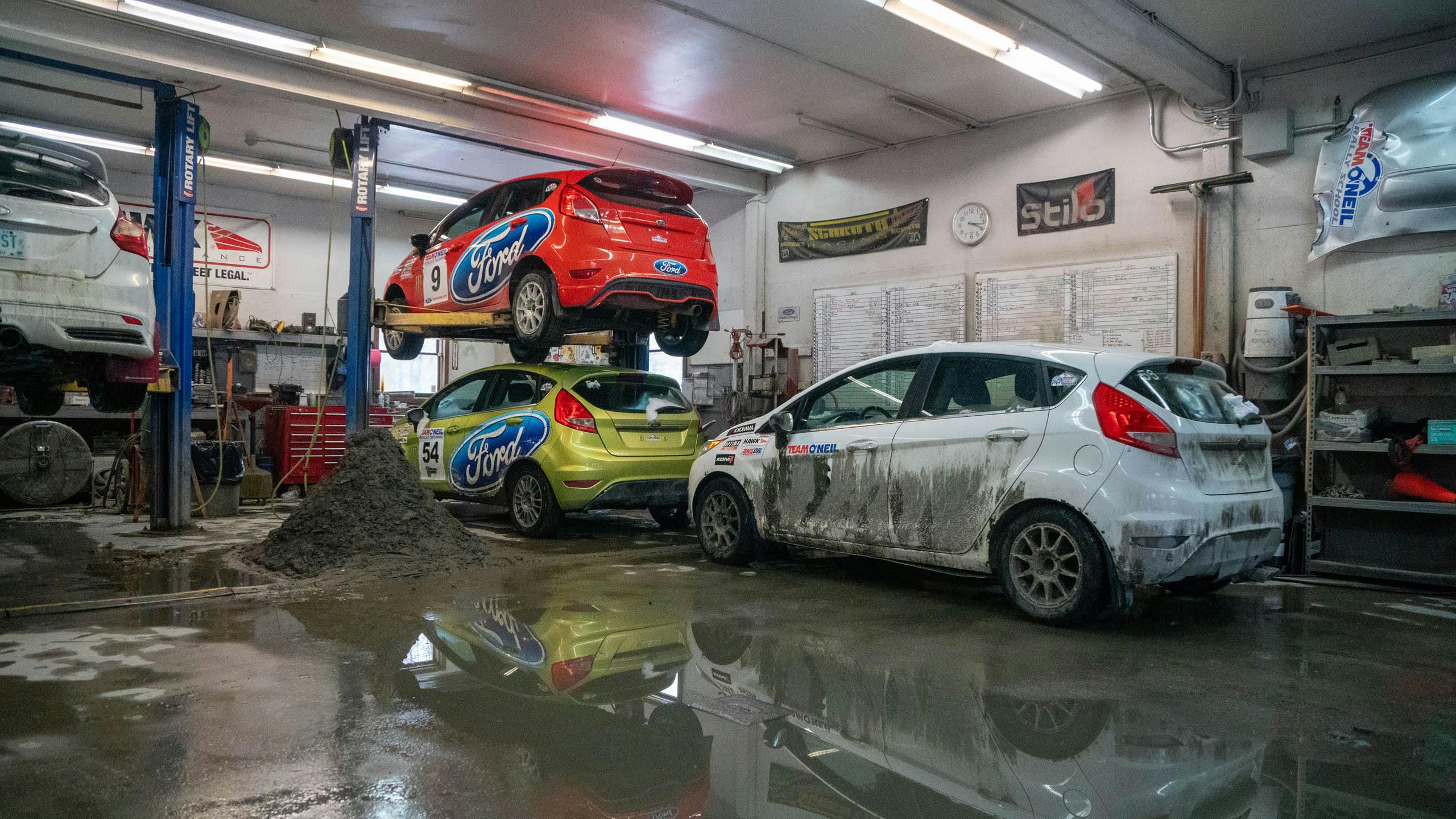
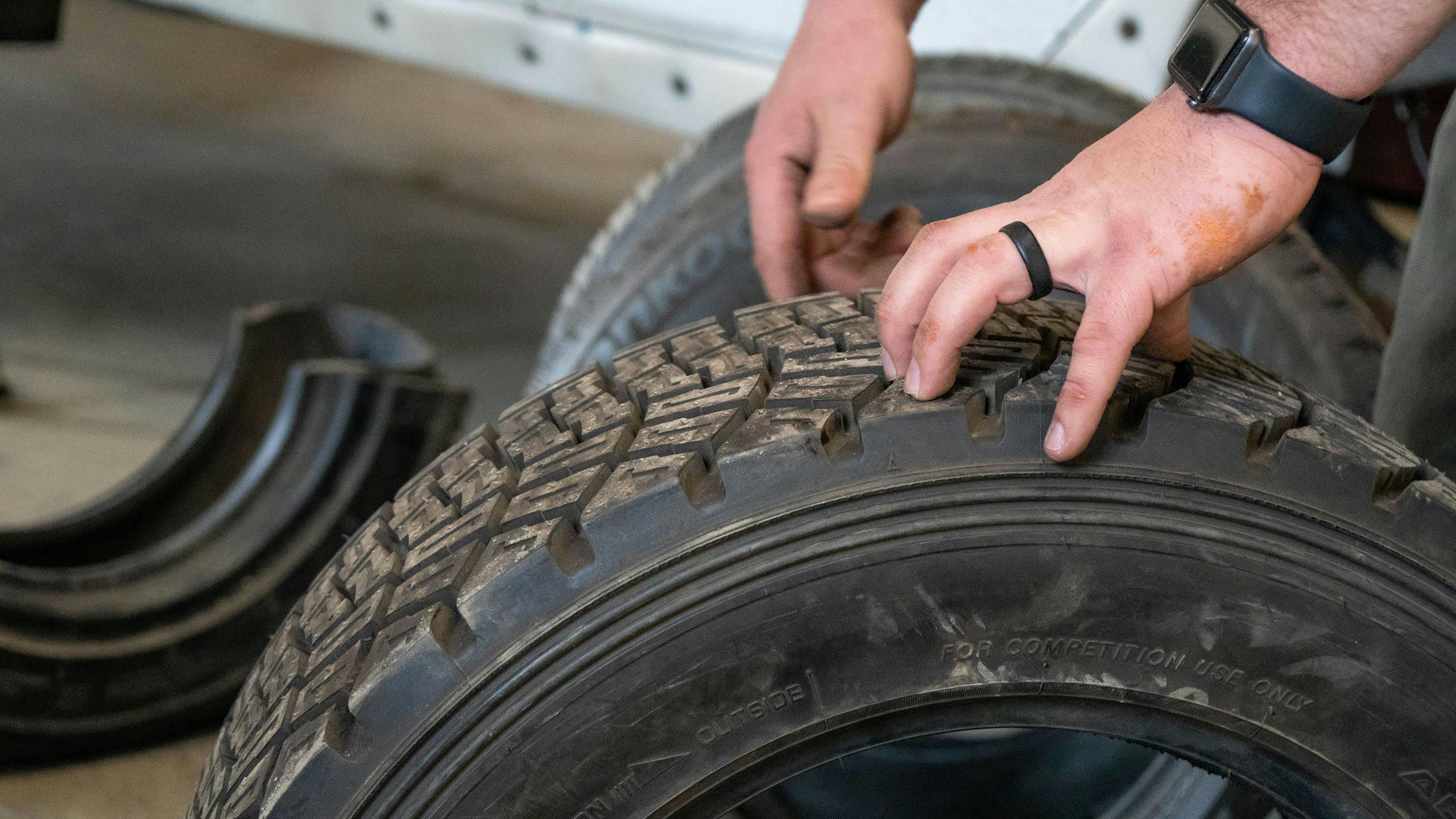

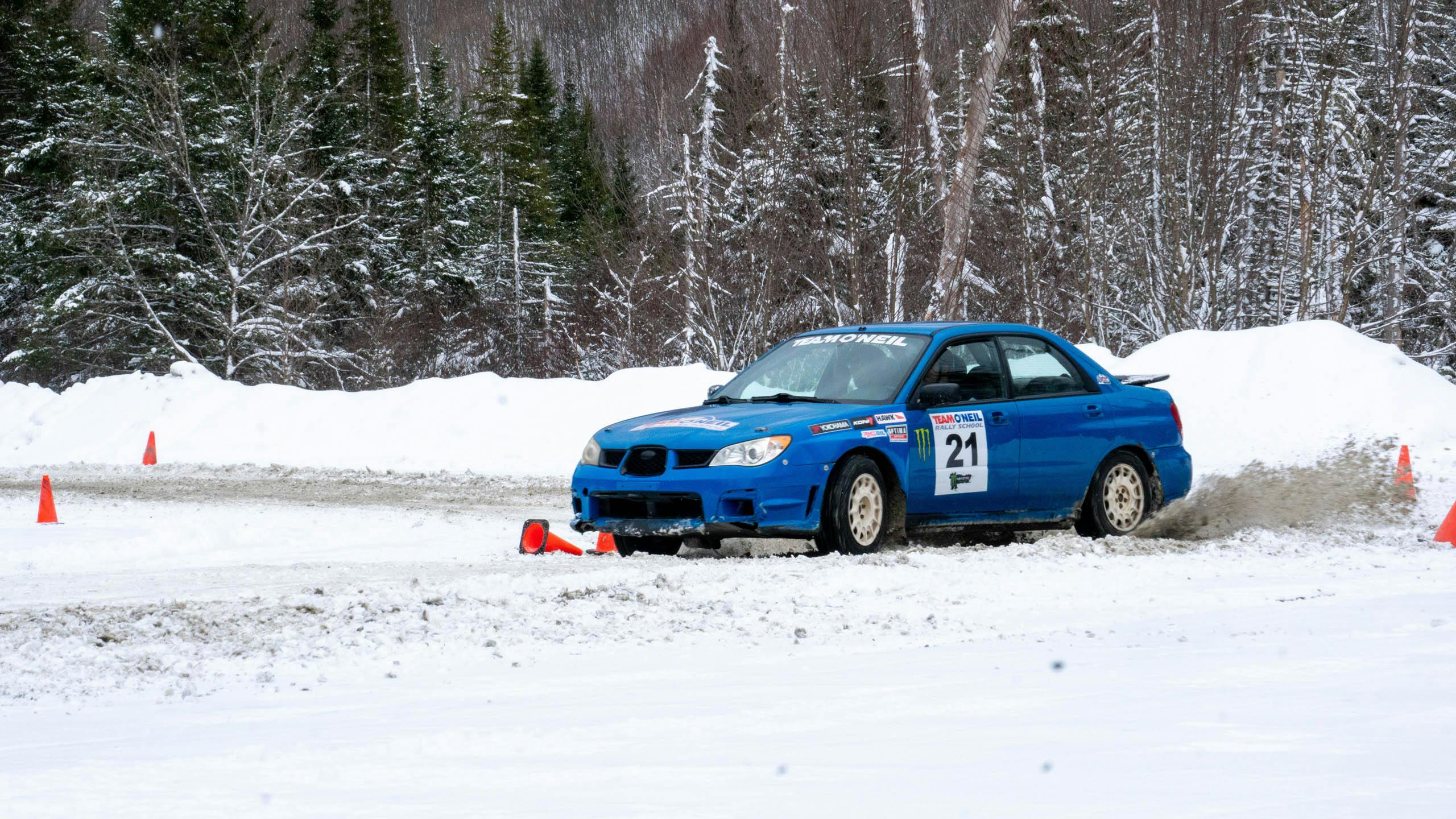

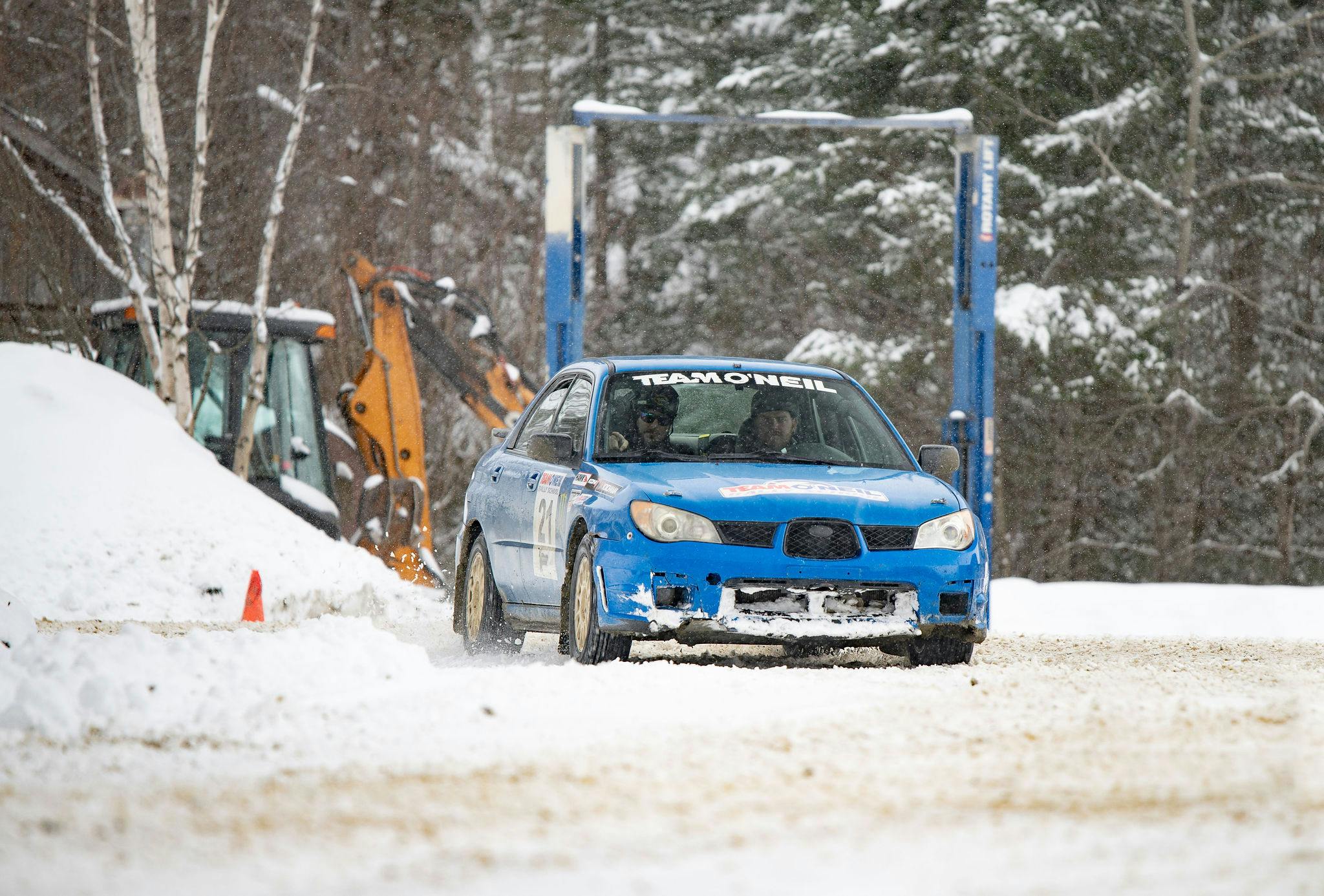
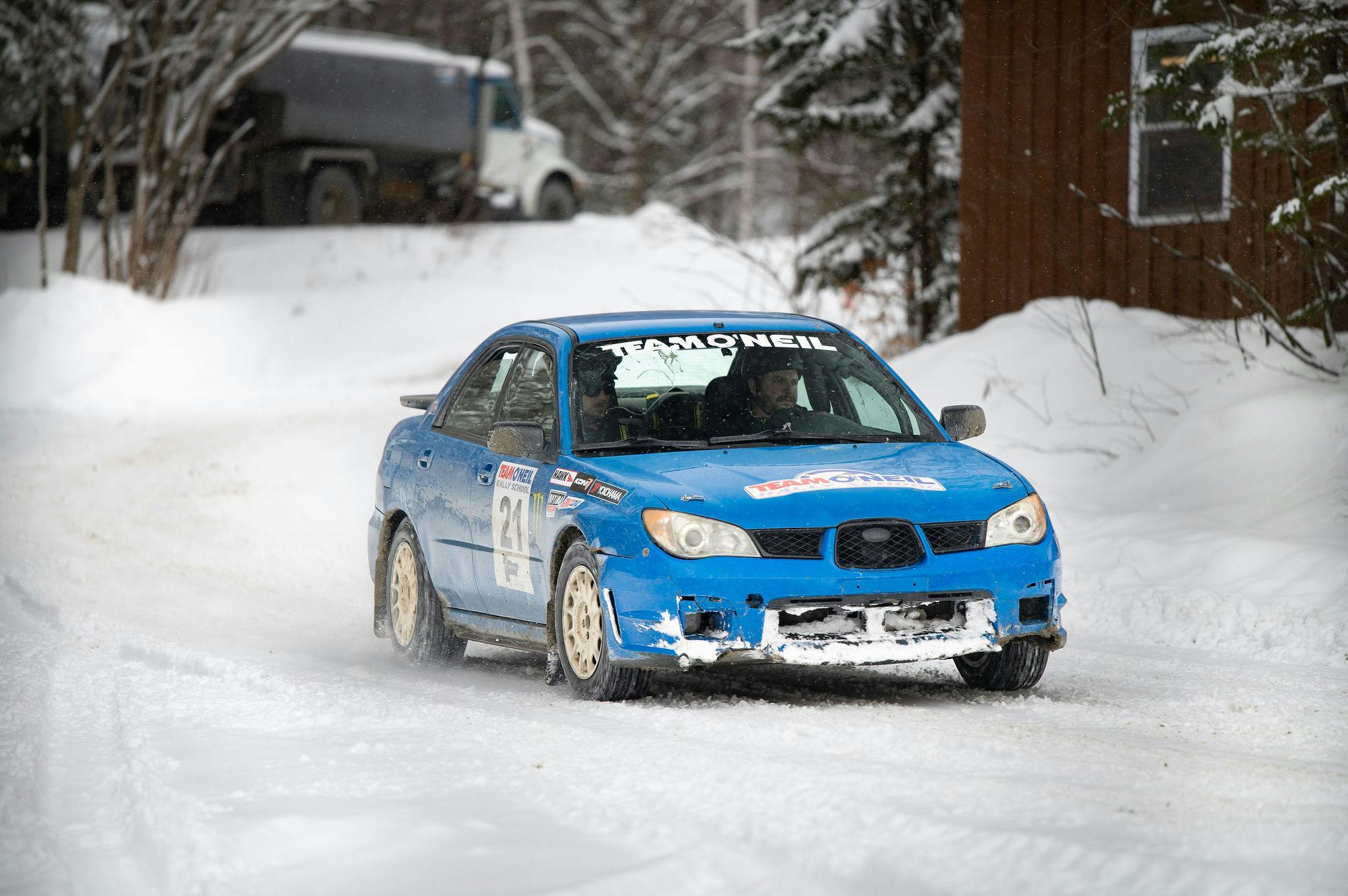
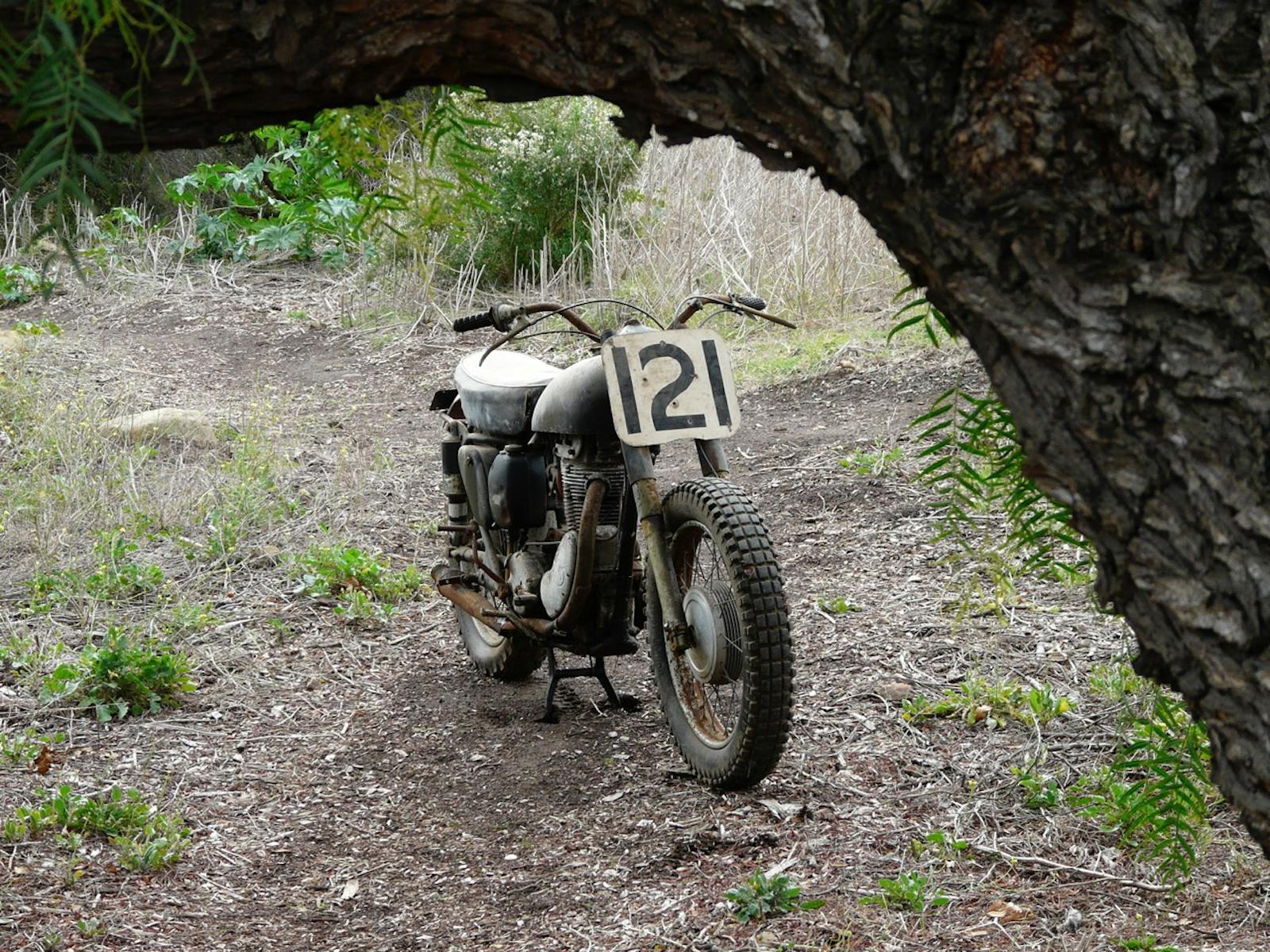

Rally is fun and driving an AWD Turboed Subaru just adds to the fun.
Gosh, if I had a car I didn’t mind abusing, that would be fun!